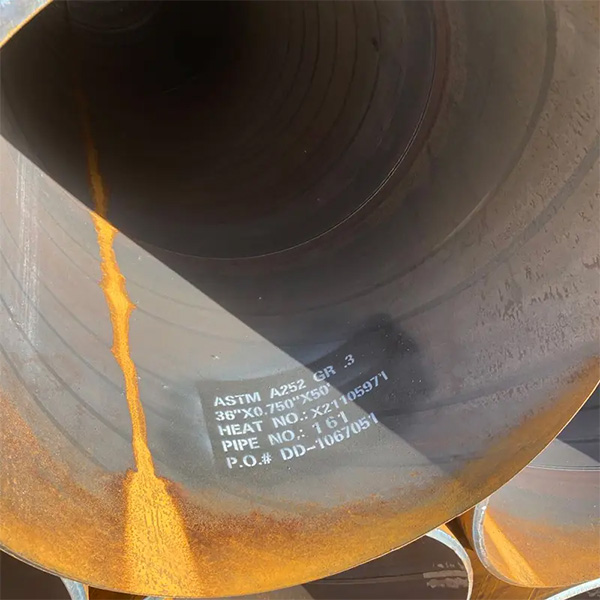Introduce:
In the steel pipe world, spiral welded pipe is popular for its superior strength, versatility and cost-effectiveness. These pipelines are widely used in various industries such as oil and gas, water transmission, structural engineering and infrastructure development. To ensure seamless integration and optimal performance, it is important to understand the specifications governing spiral welded pipe. In this blog, we will delve into the key aspects of spiral welded pipe specifications, clarifying their dimensions, materials and specific requirements.
1. Pipe size:
Spiral welded pipes are available in a variety of sizes, ensuring compatibility with different projects. Dimensions typically include outside diameter (OD), wall thickness (WT), and length. Outside diameters range from 20 inches to 120 inches, and wall thicknesses range from 5 mm to 25 mm. In terms of length, the common standard sections of spiral welded pipes are 6 meters, 8 meters, and 12 meters to adapt to various engineering requirements.
2. Materials:
The choice of SSAW pipe material is critical and depends primarily on the intended application and environmental conditions. Carbon steel is widely used for its strength, durability, and corrosion resistance. In addition, for specific applications that require enhanced corrosion resistance or high temperature resistance, pipes made of alloy steel, stainless steel, or other specialty materials can be used.
3. Manufacturing process:
Spiral welded pipe is produced through a continuous spiral forming process using steel strip coils. This method ensures uniformity of wall thickness, diameter and overall structural integrity. The coil is fed into the machine, which shapes it into the desired spiral shape and then welds the edges together. Advanced technologies involved in the manufacturing process allow for precise control over the size and performance of the final pipe.
4. Quality standards:
To meet industry standards and ensure the reliability of spiral welded pipes, various quality assurance measures are implemented. These include compliance with internationally recognized standards such as API 5L, ASTM A252 and ISO 3183-3. Compliance with these specifications guarantees the mechanical properties, chemical composition, and dimensional accuracy of the pipe.
5. Testing and inspection:
To ensure the integrity and safe operation of spiral welded pipe, strict testing and inspection procedures are required. Use non-destructive testing methods such as ultrasonic testing, radiographic testing and color penetrant testing. These tests detect any structural flaws or material inconsistencies that may affect the performance and durability of the pipe. In addition, physical tests such as hydrostatic testing are performed to evaluate the strength and pressure-bearing capacity of the pipes.
In conclusion:
Spiral welded pipes offer many advantages over other pipe types and their specifications play a vital role in maintaining their quality, reliability and compatibility with different applications. Understanding the dimensions, materials, manufacturing processes and quality standards associated with spiral welded pipe is critical to ensuring optimal performance and a cost-effective solution. As technology continues to advance, the specifications governing these pipes continue to improve, further increasing their efficiency and versatility in various industries. By considering these specifications, engineers and professionals can make informed decisions regarding the selection and use of spiral welded pipe for their projects.
Post time: Sep-22-2023

